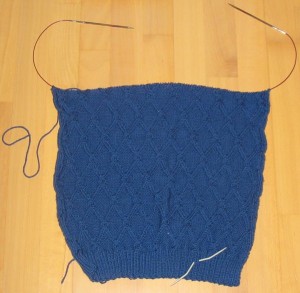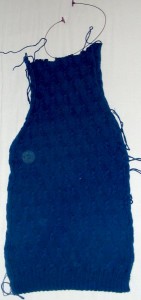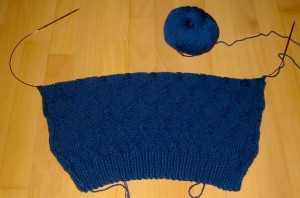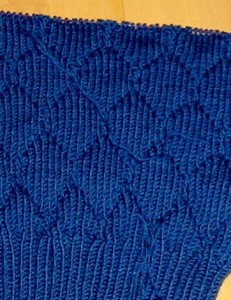Summerstitches
Manche Dinge sind offensichtlich ansteckend. Und so kann man offensichtlich nicht mit Bärbel zusammensein, ohne daß einem dann „Häkeln“ als Technik einfällt. Aber vielleicht von vorne…
 Letztes Jahr im Mai hatte ich mir ja dieses Outfit genäht, nur fehlte mir die Handtasche. Zum einen wußte ich nicht recht, was ich überhaupt wollte und als sich langsam ein Bild ergab, nämlich weiß und sehr groß, gab es natürlich nichts passendes zu kaufen.
Letztes Jahr im Mai hatte ich mir ja dieses Outfit genäht, nur fehlte mir die Handtasche. Zum einen wußte ich nicht recht, was ich überhaupt wollte und als sich langsam ein Bild ergab, nämlich weiß und sehr groß, gab es natürlich nichts passendes zu kaufen.
Und da meine Projekte ja oft aus dem entstehen, was mich umgibt… lag der Entschluß zumindest nicht fern, eine Tasche zu häkeln.
Last year in may I made this outfit for the „Motivationsmonat“ sew along. the problem that remained over the winter was the handbag question. It took me months to find out what I wanted and in the end I couldn’t find anything I liked. But at least I had decided I wanted it white and large.
And evidently it is not possible to hang around with Bärbel without ending with an idea for a bag in crochet…
 Und so bin ich vor gut zwei Wochen in die Maschenkunst getrabt und habe mich mit 500g Garn eingedeckt.
Und so bin ich vor gut zwei Wochen in die Maschenkunst getrabt und habe mich mit 500g Garn eingedeckt.
Ich habe mir für „linen“ von „katja“ entschieden, denn es sollte nicht zu dick sein und reine Baumwolle ist schwerer als dieses Mischgarn. Außerdem nutzte ich die Gelegenheit, mal eine der ergonomischen Nadeln von Clover in 3,25 auszuprobieren.
Die Tasche sieht im Moment nicht sehr aufregend aus, aber da ich bislang fast nur feste Maschen gehäkelt habe, sind es eine ganze Menge Maschen. Aber ich habe endlich die geplante Breite erreicht, jetzt geht es nur noch für eine lange Zeit „Gradeaus“ nach oben. Was schon klar ist, ist daß das Garn nicht reichen wird. Ich habe Daniela von der Maschenkunst zwar beschrieben, wie groß ich sie haben will und die festen Maschen fressen wirklich eine Menge garn, aber die Schätzung mit 500g lag weit daneben.
Das Garn häkelt sich gewöhnungsbedürftig, denn es ist nicht sehr fest gedreht. Und die Häkelnadel ist eine Krankheit. Für meine Häkeltechnik ist der breite und etwas eckige Griff absolut nicht geeignet. Ich muß die Nadel mit den Fingern drehen können und mit dem Griff geht das nicht. Aber da ich auch noch Garn brauche, sind bis dahin hoffentlich auch die KnitPro Häkelnadeln angekommen, die ich ohnehin lieber gehabt hätte…
So I went to Maschenkunst about two weeks ago and came back with 500g ot „linen“ from „katia“ and a Clover crochet hook. I wanted a not to thick yarn and the cotton linen blend has the advantage that it weigth a little less than pure cotton.
The bag so far does not look very thrilling, but as I’m using mostly single crochet there are already a lot of stitches done. I have reached the full width now and the next weeks will be simply crocheting straight on. What I can already say is that the yarn will not be enough. Daniela from Maschenkunst did a guess we both thought to be genereous, but I’ll need more of it.
The yarn is not the best choice for crochet as it is not very firmly twisted, but I’m getting used to it. The crochet hook on the contrary… my technique needs a round handle because I’m turning the hook with my fingers. If people see me crochet they usually get a strange look, so evidently I’m doing it not the „right“ way. Well, I’ll have to get more yarn and I’ll get another hook, I hope the ones from Knit Pro have arrived now…









